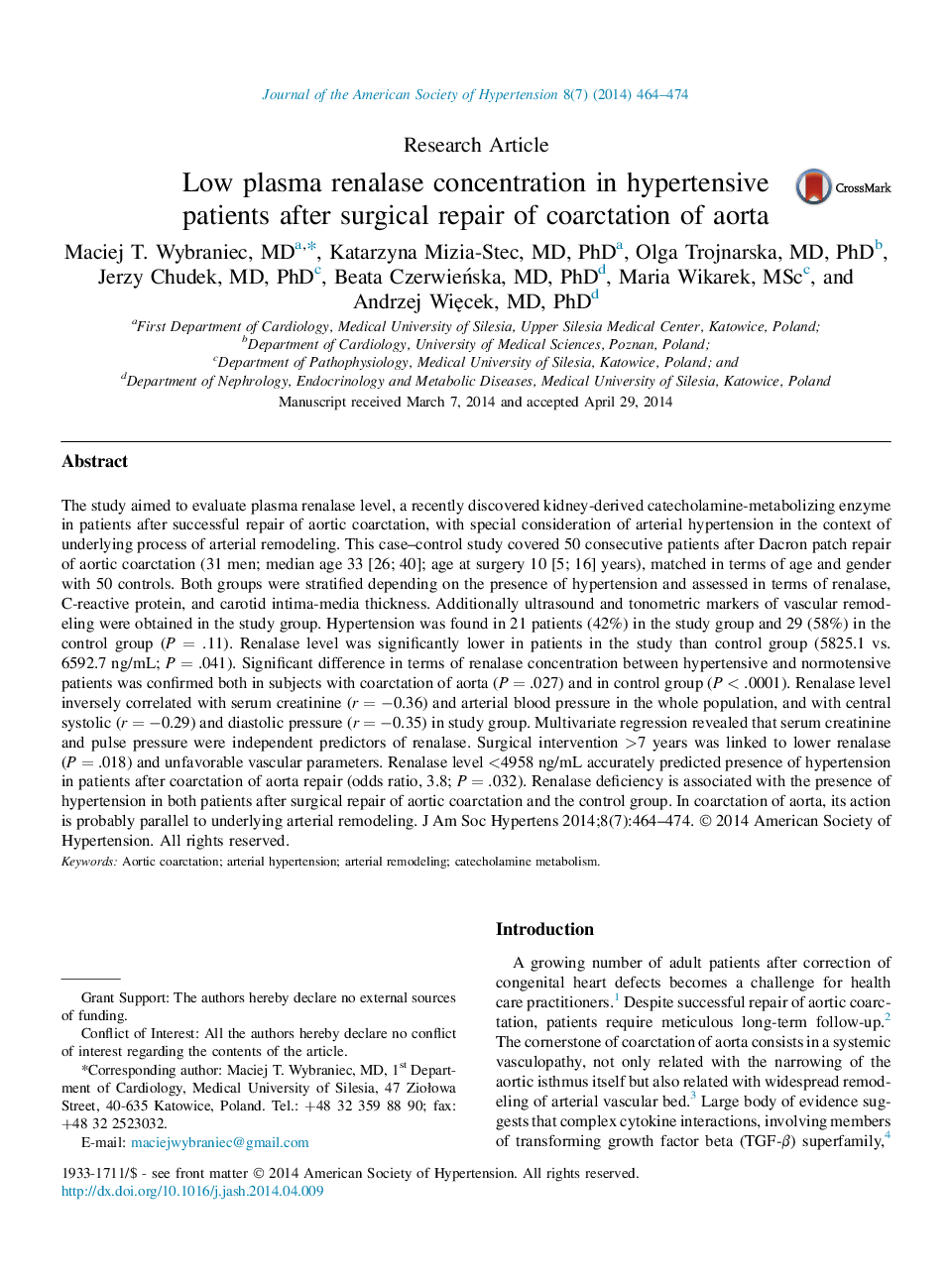| Article ID | Journal | Published Year | Pages | File Type |
|---|---|---|---|---|
| 5983577 | Journal of the American Society of Hypertension | 2014 | 11 Pages |
The study aimed to evaluate plasma renalase level, a recently discovered kidney-derived catecholamine-metabolizing enzyme in patients after successful repair of aortic coarctation, with special consideration of arterial hypertension in the context of underlying process of arterial remodeling. This case-control study covered 50 consecutive patients after Dacron patch repair of aortic coarctation (31 men; median age 33 [26; 40]; age at surgery 10 [5; 16] years), matched in terms of age and gender with 50 controls. Both groups were stratified depending on the presence of hypertension and assessed in terms of renalase, C-reactive protein, and carotid intima-media thickness. Additionally ultrasound and tonometric markers of vascular remodeling were obtained in the study group. Hypertension was found in 21 patients (42%) in the study group and 29 (58%) in the control group (P = .11). Renalase level was significantly lower in patients in the study than control group (5825.1 vs. 6592.7 ng/mL; P = .041). Significant difference in terms of renalase concentration between hypertensive and normotensive patients was confirmed both in subjects with coarctation of aorta (P = .027) and in control group (P < .0001). Renalase level inversely correlated with serum creatinine (r = â0.36) and arterial blood pressure in the whole population, and with central systolic (r = â0.29) and diastolic pressure (r = â0.35) in study group. Multivariate regression revealed that serum creatinine and pulse pressure were independent predictors of renalase. Surgical intervention >7 years was linked to lower renalase (P = .018) and unfavorable vascular parameters. Renalase level <4958 ng/mL accurately predicted presence of hypertension in patients after coarctation of aorta repair (odds ratio, 3.8; P = .032). Renalase deficiency is associated with the presence of hypertension in both patients after surgical repair of aortic coarctation and the control group. In coarctation of aorta, its action is probably parallel to underlying arterial remodeling.
